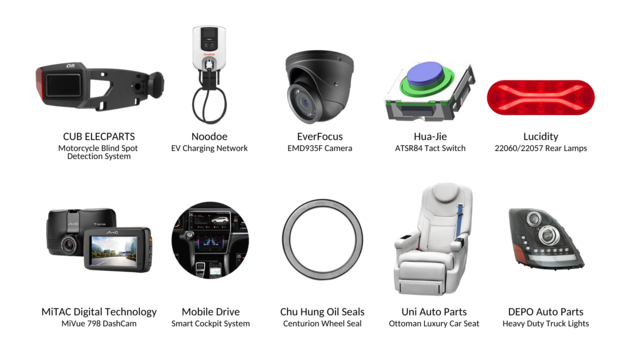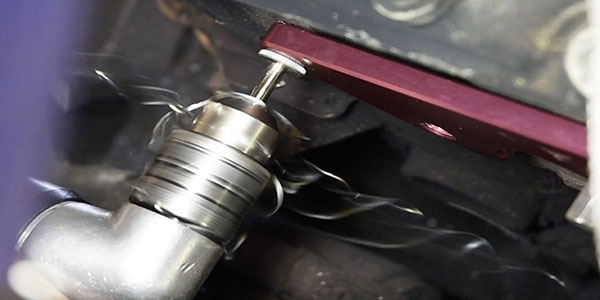An imploded brake hose symptom occurs when the inner nitrile tube of the brake hose ruptures. The two most common reason are: 1) Techs using vice grips to crimp off a brake hose when changing calipers. This is a bad practice since many times, it will break the inner nitrile tube, setting the stage for a hose rupture and implosion. 2) Some manufacturers clamp the brake hose to the fender wall. Over time, there is a warring effect between the point where the hose is held tight in the clamp and where it flexes. Eventually the inner tube will rupture, once again setting the stage for an implosion of the inner tube.
Once the tube rupture occurs and the brakes are applied, the brake fluid is pushed past the rupture, actuating the caliper. However, when you release the brake, the implosion acts like a one-way valve, not allowing the fluid back to the master cylinder and allow the caliper to release. This has all the indications of a stuck slide or frozen piston, but it is only the hose that needs replacement. It is a hard lesson to learn when the car comes back with the same symptoms after replacing all of the brake hardware, i.e., rotor calipers and brakes.
Uneven brake wear can also be misdiagnosed very easily because there are no tools to detect its hidden cause. A common scenario that shop owners face is when a customer comes in with one side brake pads worn down to the metal and the other side in decent shape. The first reaction is to replace the calipers, rotors and brakes then test drive the car and return it to the customer. Two weeks later, the customer comes back and describes the same noise and problem as before. As soon as you pull the car into the shop and hear the metal scraping again, you will immediately know what the problem is, but may not know why it’s happening again. At this point, some techs will install a second set of parts hoping the first caliper was bad; maybe replace the proportioning valve, maybe the master cylinder or maybe the brake hose.
Checking for disproportionate brake pressure balance with the appropriate tools will allow the tech to fix it the first time, saving time, energy, guess work and embarrassment when the customer comes back. If you see a disparity from right to left, you most likely have a bad proportioning valve on the diagonal brake circuit. However, before replacing the portioning valve, be certain the rear brake adjustment is correct.
Improper rear brake adjustments can also cause front uneven brake wear. When conducting this test, test twice — one time with the emergency brake applied and another time with it off. The PSI balance between the front left and right sides should remain stable on both tests. If not, this is an indication that the rear brakes are not adjusted properly. This can also be a real time saver when working on tandem wheels since they are so hard to check for rear brake adjustments.
This article was sponsored by Innovative Products of America, Inc. For more information, please visit our website at www.ipatools.com




